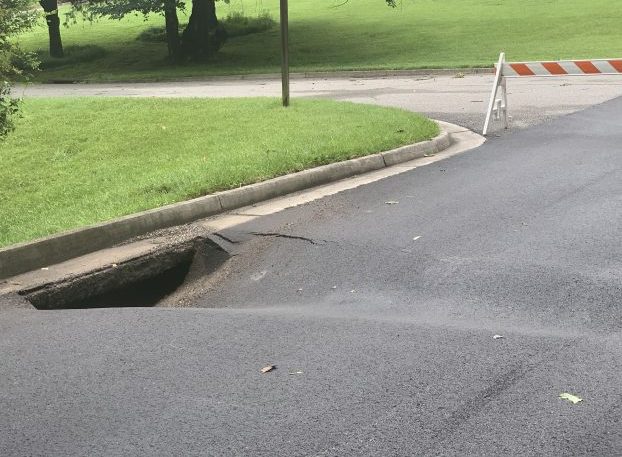School begins $1.9 million project
Published 1:05 pm Thursday, September 7, 2017

- This architectural rendering and concept depicts what the roofs on the Fuqua School lower buildings could look like once complete. Improvements at the schools include HVAC work, relamping and installation of energy monitoring controls. (Photo courtesy of Fuqua School)
The Rural Education Foundation Board (REFB) and Fuqua School have embarked on a $1.9 million facilities improvement project, one that officials say, through utilizing mechanisms to increase energy efficiency and lowering maintenance costs, will save the school money overall.
According to Head of School John Melton, phase one of the project was approved in June.
Phase one, according to Melton, focuses on replacing all heating and cooling equipment in the Lower School buildings and selected Upper School buildings. The buildings, Melton said, will see installation of energy monitoring and controls, which he described as dialing back “the heating and cooling based on occupancy.”
Trending
“We’re also replacing the roofs on the two Lower School classroom buildings … with the exception of the lower school commons, which is the newest building on campus,” Melton said.
The entire Lower School will be relamped with LED lighting “as well as selected Upper School buildings,” Melton said.
Upper School buildings set to see work include the gym, the Gee Price Center and the middle school.
“Really what it came down to is what could we do in terms of a project that was fiscally manageable and responsible for the school,” Melton said. “So there are a number of things we want to do after this, but this is a step in the right direction.”
The HVAC and relamping work will take place in the buildings after school hours, Melton said. “The reroofing will take place in June and July when the school is out. By the end of July 2018, the project should be complete, ready for the opening of school.”
Melton said the identified areas had the greatest need and could net the greatest returns in savings.
Trending
“I am happy we are going to be able to do some of the overdue improvements to our Fuqua School facilities,” said Terry Hudgins, who serves as chairman of the REFB. “I appreciate the hard work the trustees and John’s team put forth to make this a reality. The improvements will provide a better learning environment and a significant cost savings for Fuqua School.”
Putting the project into context, Melton said “one way of looking at this is that this is the biggest facilities improvement project the school has undertaken since the building of the Lower School commons in 1993,” Melton said.
Before the REFB approved the project, the school received a $70,000 grant from the Jesse Bond duPaul Fund to audit the school’s energy use in each of its buildings.
“And basically the grant was to support an energy and maintenance audit of the Fuqua campus, building by building, meter by meter,” Melton said.
He said Southland Industries came to the school, analyzing utilities data, energy data, maintenance data building by building and generated a model, which Melton said, “establishes values of what you can save over a 20-year period of time. It also offers the opportunity for … Fuqua School to identify the areas of our campus or of our facility that are in the greatest need of attention.”
The recommendations for improvements and energy efficiencies came in the spring, he said.
“Simultaneously the school applied for and was accepted into a program called Virginia Saves,” which Melton described as a state-sponsored program where nonprofit schools “are able to basically apply for an interest rate reduction in our loan for a facilities improvement project designed to improve energy efficiency … And basically what Virginia Saves does is they buy a bond, and they utilize the proceeds from that bond to buy down the interest rate for our loan.”
He said the school was able to reduce the interest rate on its Union Bank loan through this mechanism “from about 4.5 percent to 1.7 percent.”
The combined energy savings will result in about $80,000 in annual savings through the life of the loan for the project, Melton said.
He called the energy savings plan a well-defined and well-vetted model.
Melton noted the energy savings model “projects the amortization of the cost associated with the project over 20 years, but it also projects the energy and maintenance savings over the 20 years. So, what they have built into the model is the new equipment that you buy today is going to be 10 years old 10 years from now. So, while it may cost you very little to maintain it in year one, it will cost you more to maintain it in year 10. Those additive costs and additive savings are all built into that 20-year model.”
Southland Industries, Melton said, is an engineering company that specializes “in this conversion of dated facilities to highly energy-efficient retrofitted facilities with an eye on minimizing cost through the maintenance and energy savings.”
“So now you have the energy savings, the maintenance savings and the interest rate buy down is a third pathway of savings, so when you do actually take out the loan, in this case our annual payment on the loan is about $140,000. Well, when you factor in the energy savings, the maintenance savings and the interest rate buy down, it’s actually about $40,000.”
Phase two of the overall project, Melton said, would focus on Upper School instructional spaces “because they’re also in need of attention.”






